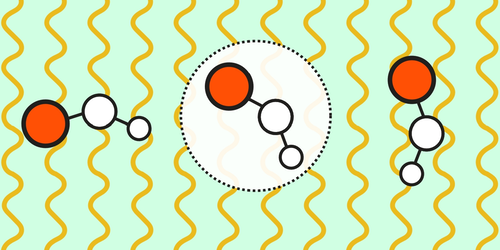Engineering Molecular Transitions for Symmetry-Violation Tests
Ultracold atoms and molecules are promising platforms for sensitive tests of fundamental physics principles. For example, molecular spectra can be used to probe charge-parity (CP) symmetries, potentially revealing CP violations unforeseen by the standard model. So far, such CP-violation tests have delivered null results. That could change as tests become more sensitive. To that end, Yuiki Takahashi and his colleagues at the California Institute of Technology have now “engineered” molecular transitions insensitive to external magnetic and electric fields, which can produce noise large enough to hide CP-violation-induced signals [1]. Approaches using such molecular transitions could lead to order-of-magnitude sensitivity enhancements in CP-violation tests, Takahashi says.
For CP-violation tests, the molecules should be laser coolable down to microkelvin temperatures, the transitions should display sizeable energy shifts from CP-violation effects, and the transitions should be amenable to methods for rejecting systematic measurement errors. Scientists have identified molecules with these traits, but those molecules have pronounced sensitivities to external fields that can introduce energy shifts big enough to mask potential CP-violation signals.
Takahashi and his colleagues show that they can reduce this sensitivity 100-fold by polarizing the molecules with an electric field. As a result, the molecular transitions achieve “magic conditions” where the unwanted energy-level shifts produced by external fields will cancel out. The team characterized various diatomic and triatomic molecules, pinpointing promising targets for CP-violation tests. Takahashi says that he and his colleagues will soon run tests on a standout candidate, 173YbOH, a molecule that predictions indicate could manifest a measurable nuclear magnetic quadrupole moment if a CP-violation occurs within the Yb nucleus.
–Matteo Rini
Matteo Rini is the Editor of Physics Magazine.
References
- Y. Takahashi et al., “Engineering field-insensitive molecular clock transitions for symmetry violation searches,” Phys. Rev. Lett. 131, 183003 (2023).




